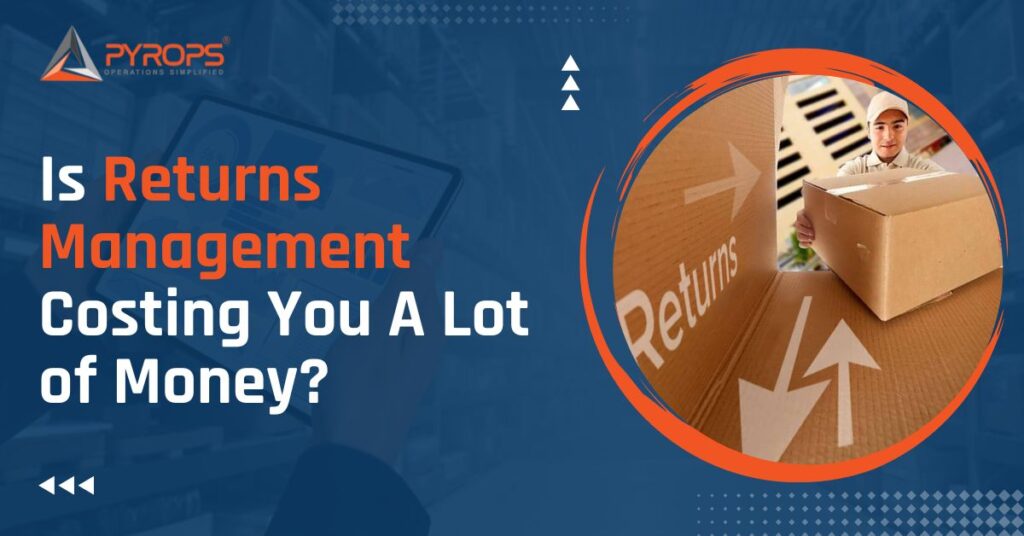Let’s Evaluate & Find a Solution!
Ecommerce returns are notoriously famous. Generally accepted as inevitable, returns are sometimes in the blind spot of many merchants. Abnormally high return rates eat into margins. Returns management has a direct impact on your warehousing and storage, as well as inventory management.
Many e-commerce businesses are struggling to effectively manage returns and minimize the costs associated with them. Let’s look at some of the key elements of returns management and how technology can help to optimize it.
What is the actual cost of returns to the company?
Returns coordination costs
Many companies lack responsive web/mobile interfaces. This can facilitate a largely contact-less returns processing. Deploying agents to serve this need through call/chat results in additional costs.
Logistics costs
This is the cost your shipping partner will charge you to bring the product back to your facility. Returns processing costs at the warehouse. Returns occupy space in the warehouse while awaiting processing. They require more diligent segregation, quality checks, and coordination as compared to forward orders.
Restocking costs – repackaging, refurbishing, scrap
It is important to clean returned items, and repackage them in a marketable condition before reselling them. The need for refurbishment may arise at times. Lastly, not every returned product can be salvaged for sale – some of them need to be scrapped.
Working capital costs
The return leg blocks your working capital.
Opportunity cost
During the return leg, the product loses the chance to sell.
Despite being expensive, returns are part of doing business. They do provide an opportunity to find areas of improvement. If analyzed correctly and diligently, they can turn into a fantastic customer feedback mechanism. Also, if the returns process is seamless and friction-free – you end up building a loyal customer with high lifetime value.
Reasons why customers returned products
There can be a variety of reasons for a customer to return a product, some of them being
- Incorrect product information on the website
- Inaccurate returns policy on the website
- Information on the website is not clearly visible in the right place during the purchase journey
- Damaged Product
- Wrong product shipped
- Delayed delivery
- Customer changed their mind
- Product no longer needed
- Packaging related issues
When analyzed right, the action areas generally converge into these four buckets.

How can technology help reduce returns or optimize return costs?
Clickstream analytics
Using Clickstream analytics to understand the gaps in information availability and consumption.
PIM (Product Information management)
Using Product Information Management tools to manage product information in a structured and standardized manner.
Real-time analytics and recommendations
Using customer history to prompt the customer, in case the customer is attempting to buy a size deviant from his/her regular size.
Data Analytics
Using Data analytics to identify the core issues and find potential solutions. Data analytics can help slice and dice and analyze data at product/seller/customer/fulfilment centre/payment mode/and so many other levels.
QC checks
Customized QC prompts based on product category at the time of packaging help ensure meaningful QC.
Video capture
Capturing video of the packaging process at outbound to trace back operator errors.
LRFO
Last returned first out ensure that, if a product is ordered – a returned unit of the product gets priority for shipping over other fresh non-returned units.
Serialized tracking
Serializing and identifying every unit with a barcode allows identifying problems at the unit level. It may so happen that one particular unit of a product is faulty and is being returned over and over.
Return reason cross-verifications with customer claims
While a customer may choose any reason to submit a return request, capturing the condition/reason code at the warehouse level for the same product is important. Looking at the two together throws reveals invaluable insights.
In Nutshell
When you perform all these tasks at the same time, you will be able to achieve greater results and minimize your overall costs. But managing each of them at the same time can be a real challenge, especially if you have manual dependencies.
By implementing returns management through a software solution, you can automate the return process, deliver better customer service, and almost get real-time updates.
Pyrops’ Returns Management system is designed to manage end-to-end order returns with complete efficiency. It streamlines the returns process and increases profitability by ensuring that items are quickly returned to inventory and ready to sell again!







